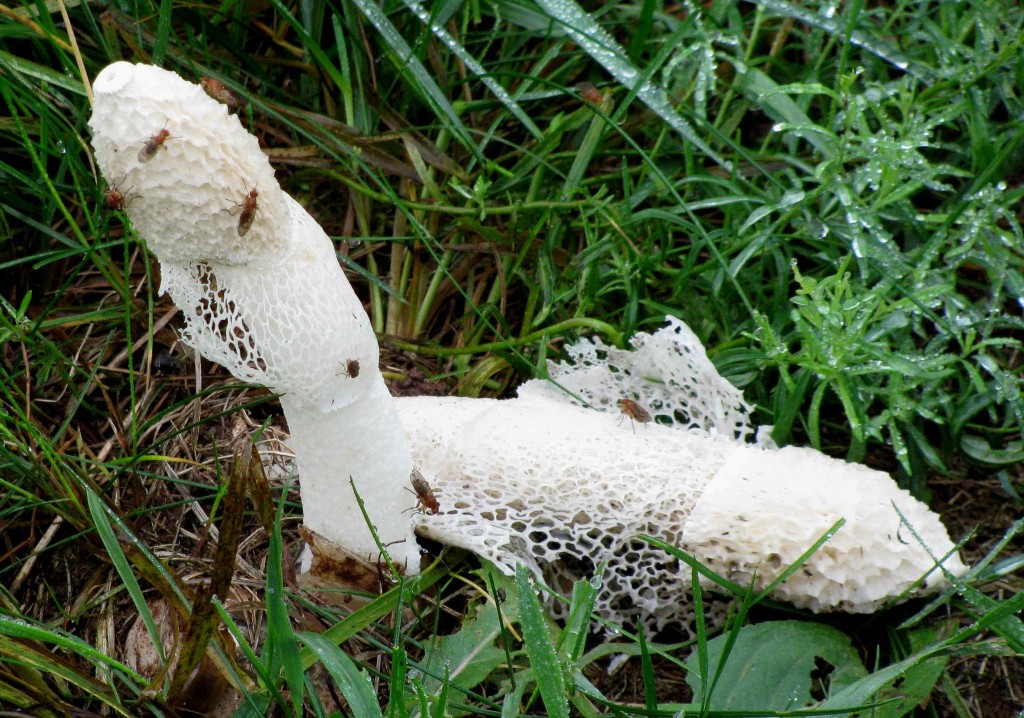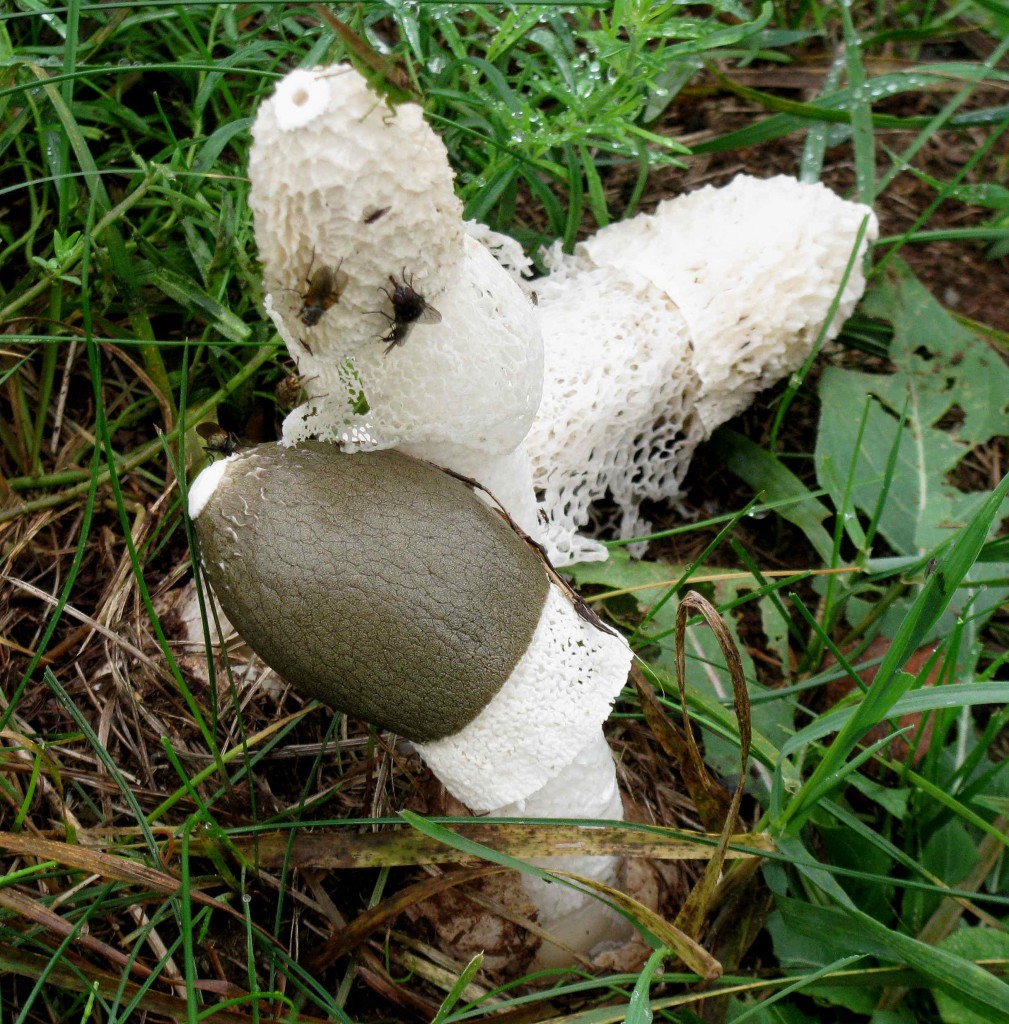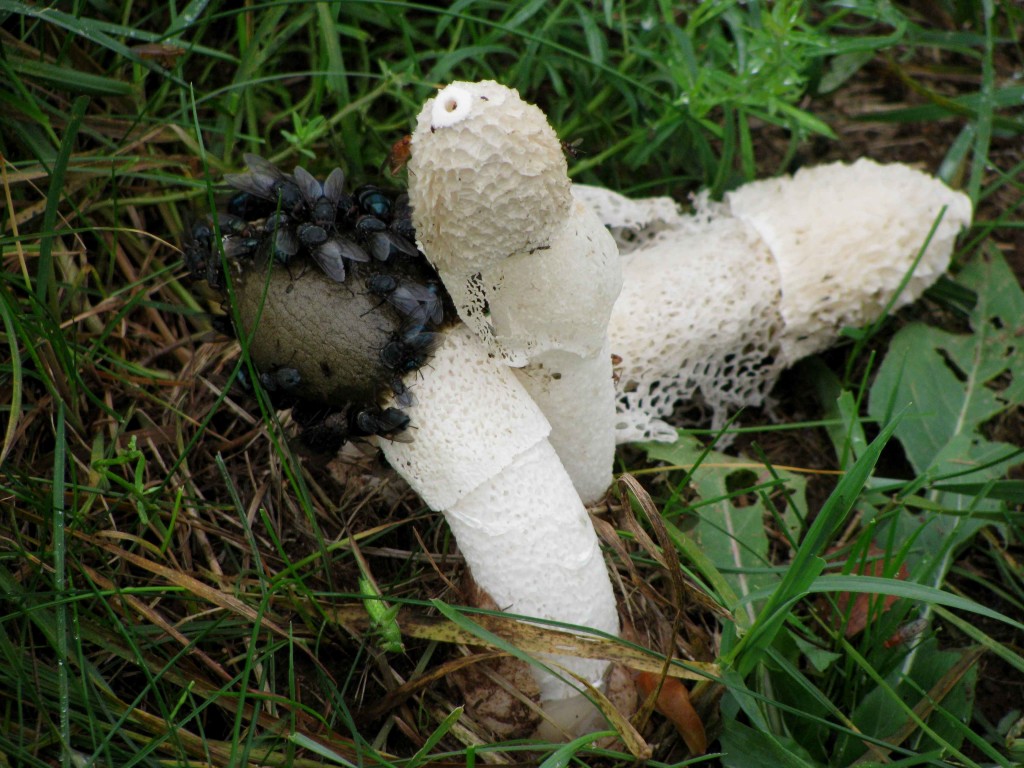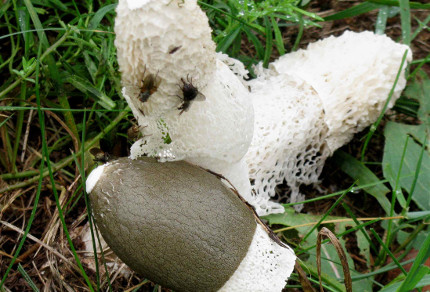
Skirted (Netted) Stinkhorns, Dictyophora duplicata (© Magi Nams)
At 9 a.m., beneath drizzly skies and cloud battening down unseasonably warm air, I checked on the skirted stinkhorns I discovered yesterday. The fruiting stalk which I had presumed to have erupted in the early hours yesterday, this morning stood completely white, bare of the olive-brown slime composed of basidia and basidiospores. A few flies tread over the surface of both this fruiting stalk and the older one lying prostrate on the ground. The lovely, lacy skirts of both were torn and, in the case of the oldest mushroom, ragged. The ‘egg,’ seen in the lower left in the above photo as a vaguely circular pale brown mass mostly hidden by grass stalks appeared fuller, its surface less crinkled. I wondered if eruption of a fruiting stalk was imminent and decided to check again later.

Skirted (Netted) Stinkhorns, Dictyophora duplicata (© Magi Nams)
At 1:20 p.m., I took a break from writing to harvest celery and peppers and to check on the skirted stinkhorns. I found that I’d missed the actual eruption of the fruiting stalk through the case of the ‘egg.’ However, the recently-erupted stalk was shorter than either of the two older fruiting stalks, which led me to believe that it was still engaged in the elongation process. Although flies continued to be attracted to the fruiting stalk that had erupted yesterday, none were landing on the newest of the skirted stinkhorn trio, causing me to guess that the latter had not yet released the fetid attractant odour characteristic of this group of mushrooms.

Flies on Skirted (Netted) Stinkhorn, Dictyophora duplicata (© Magi Nams)
At 3:20 p.m., the fruiting stalk was further elongated, the fetid attractant wafted through the air in all its repulsive glory, and flies swarmed over the slimy, spore-ridden surface of the cap, indicating exactly how effective the mushroom’s spore-dispersal strategy is.
Science word for the day: indusium = the lacy, net-like or skirt-like veil of the skirted (netted) stinkhorn.1
Reference:
1. Orson K. Miller, Jr. Mushrooms of North America. E.P. Dutton, New York, p. 292.


